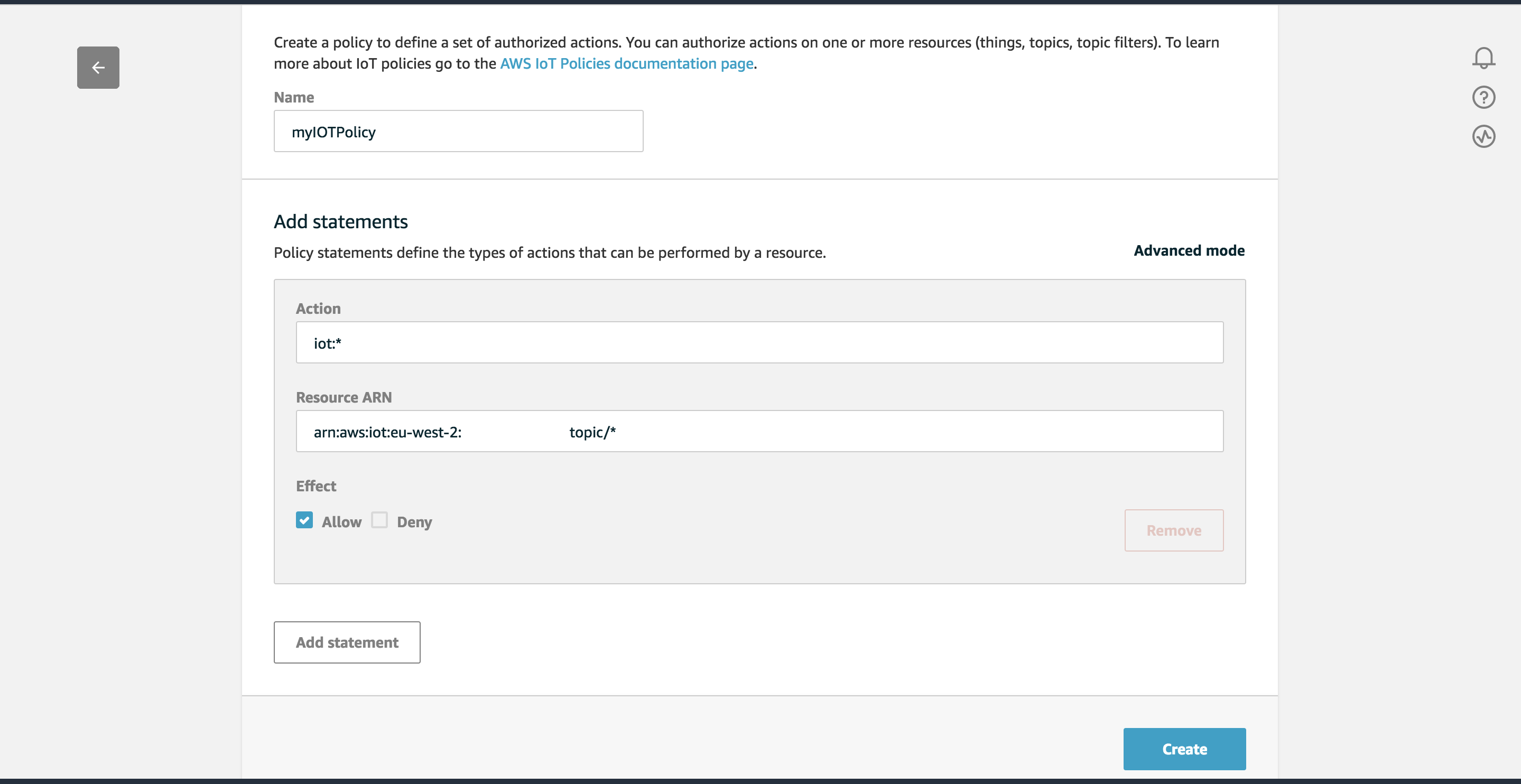PubSub
The AWS Amplify PubSub category provides connectivity with cloud-based message-oriented middleware. You can use PubSub to pass messages between your app instances and your app’s backend creating real-time interactive experiences.
PubSub is available with AWS IoT and Generic MQTT Over WebSocket Providers.
With AWS IoT, AWS Amplify’s PubSub automatically signs your HTTP requests when sending your messages.
Installation and Configuration
AWS IoT
When used with AwsIOTProvider, PubSub is capable of signing request according to Signature Version 4.
To use in your app, import AWSIoTProvider:
import Amplify, { PubSub } from 'aws-amplify';
import { AWSIoTProvider } from '@aws-amplify/pubsub/lib/Providers';
Define your endpoint and region in your configuration:
// Apply plugin with configuration
Amplify.addPluggable(new AWSIoTProvider({
aws_pubsub_region: '<YOUR-AWS-REGION>',
aws_pubsub_endpoint: 'wss://xxxxxxxxxxxxx.iot.<YOUR-AWS-REGION>.amazonaws.com/mqtt',
}));
Create IAM policies for AWS IoT
To use PubSub with AWS IoT, you will need to create the necessary IAM policies in the AWS IoT Console, and attach them to your Amazon Cognito Identity.
Go to IoT Core and choose Secure from the left navigation pane. Then navigate to Create Policy. The following myIOTPolicy policy will allow full access to all the topics.

Attach your policy to your Amazon Cognito Identity
The next step is attaching the policy to your Cognito Identity.
You can retrieve Cognito Identity Id from your aws-exports.js file in aws_cognito_identity_pool_id property.
Alternatively, you can retrieve the Cognito Identity Id of a logged in user with Auth Module:
Auth.currentCredentials().then((info) => {
const cognitoIdentityId = info._identityId;
});
Then, you need to send your Cognito Identity Id to the AWS backend and attach myIOTPolicy. You can do this with the following AWS CLI command:
aws iot attach-principal-policy --policy-name 'myIOTPolicy' --principal '<YOUR_COGNITO_IDENTITY_ID>'
Third Party MQTT Providers
Import PubSub module and related service provider plugin to your app:
import { PubSub } from 'aws-amplify';
import { MqttOverWSProvider } from "@aws-amplify/pubsub/lib/Providers";
To configure your service provider with a service endpoint, add following code:
// Apply plugin with configuration
Amplify.addPluggable(new MqttOverWSProvider({
aws_pubsub_endpoint: 'wss://iot.eclipse.org:443/mqtt',
}));
You can integrate any MQTT Over WebSocket provider with your app. Click here to learn more about about MQTT Over WebSocket.
Working with the API
Subscribe to a topic
In order to start receiving messages from your provider, you need to subscribe to a topic as follows;
PubSub.subscribe('myTopic').subscribe({
next: data => console.log('Message received', data),
error: error => console.error(error),
close: () => console.log('Done'),
});
Following events will be triggered with subscribe()
| Event | Description |
next |
Triggered every time a message is successfully received for the topic |
error |
Triggered when subscription attempt fails |
close |
Triggered when you unsubscribe from the topic |
Subscribe to multiple topics
To subscribe for multiple topics, just pass a String array including the topic names:
PubSub.subscribe(['myTopic1','myTopic1']).subscribe({
// ...
});
Publish to a topic
To send a message to a topic, use publish() method with your topic name and the message:
await PubSub.publish('myTopic1', { msg: 'Hello to all subscribers!' });
You can also publish a message to multiple topics:
await PubSub.publish(['myTopic1','myTopic2'], { msg: 'Hello to all subscribers!' });
Unsubscribe from a topic
To stop receiving messages from a topic, you can use unsubscribe() method:
const sub1 = PubSub.subscribe('myTopicA').subscribe({
next: data => console.log('Message received', data),
error: error => console.error(error),
close: () => console.log('Done'),
});
sub1.unsubscribe();
// You will no longer get messages for 'myTopicA'
API Reference
For the complete API documentation for PubSub module, visit our API Reference
Using Modular Imports
If you only need to use Pubsub, you can do: npm install @aws-amplify/pubsub which will only install the Pubsub module for you.
Note: if you’re using Cognito Federated Identity Pool to get AWS credentials, please also install @aws-amplify/auth.
Then in your code, you can import the Pubsub module by:
import Pubsub from '@aws-amplify/pubsub';
Pubsub.configure();



